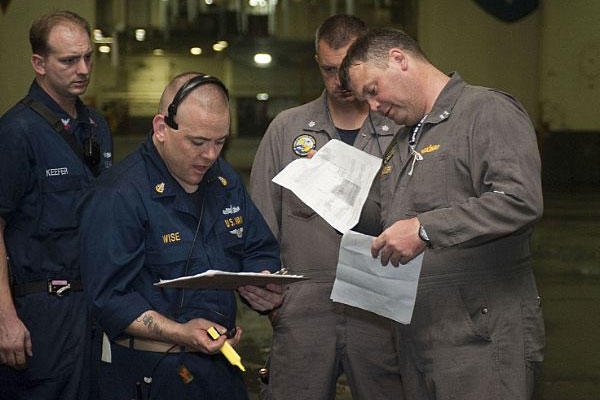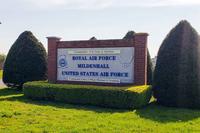NORFOLK, Va. -- The president of the Board of Inspection and Survey (INSURV) rolled out major changes to the frequency and grading method of the INSURV program effective Jan. 1.
Rear Adm. Robert Wray, INSURV president, said changes to the frequency of the inspections and the grading system were implemented to improve the readiness of Navy ships and crews and to provide Navy and congressional leaders with an accurate reflection of that readiness.
Under the old program, INSURV teams conducted exhaustive inspections and surveys of ships every five years and reported their material readiness to Congress. Now ships will be inspected about every 30 months.
"The Navy is always working to improve how we assess our ships. Over time, we came to the conclusion that ships aren't being looked at often enough to give leadership the readiness information we want, and to give ship's crews the practice they need to get through the inspections on their own," said Wray. "Hence the move to double the frequency of inspections."
Under the new inspection timeline, INSURV inspectors will conduct a traditional "Material Inspection" during a unit's Fleet Response Plan (FRP) cycle. In the alternating cycle, a similar inspection will be conducted by the unit's type commander with INSURV support.
The other notable change comes to the overall grading system. Previously, the program utilized a grading status of Satisfactory, Degraded or Unsatisfactory, which oversimplified inspection results with a coarse one-word descriptor attempting to describe a ship with nearly 200 sub-systems. The new system will use a more quantifiable INSURV "Figure of Merit," which is a weighted average of 30 scores used to provide a final grade and report on the overall readiness of a ship.
In the past, Sailors could spend up to two years preparing their ship for an INSURV inspection. "Come as you are" is one of the goals of the revised process.
It means that rather than exhaustively preparing for an INSURV, ships will prepare for deployment, and the INSURV process will measure their material condition as a part of that process.
Changes to the scope, breadth and rigor of the INSURV process have already been fully implemented.
Wray said Navy leadership felt the grading system and the five-year time span between inspections under the old system were not effectively meeting Navy material readiness objectives.
"The major change for the average Sailor will be two-fold," Wray said. "First, each ship, prior to each deployment, will have a full-blown material inspection in which the ship will be expected to get underway, do full power, anchor, shoot guns, operate combat systems, etc., for a team of external inspectors. Second, ships will be expected to do this on their own, without months of external preparation and assistance."
While twice as many inspections may sound like a bad thing, Wray stressed that the new process will benefit the Sailors who have to prepare the ship for INSURV.
"We want the pre-deployment material inspection to be a normal part of doing business, like the Composite Training Unit Exercise (COMPTUEX), something ships know how to do on their own," he said. "In a larger sense, we want to create a 'culture of material readiness' in which ships and their crews are always thinking about being ready for INSURV. The concept is to create a culture for material readiness, in which any ship, at any time in the appropriate part of the FRP, could successfully shoot their guns, do full-power runs, anchor, and demonstrate her combat systems."
Wray said the goal of these changes is very simple.
"In a perfect world, every ship will complete a rigorous material inspection prior to every deployment, conducted either by INSURV or by their TYCOM, using INSURV methods. Ship's crews will be able to prepare for, and successfully complete, the inspection on their own. Navy leadership will also get true, accurate, unvarnished readiness information upon which to make resourcing decisions."
INSURV's primary purpose is to fulfill Title 10 responsibilities to examine the material readiness of U.S. Navy vessels and report the findings to the secretary of the Navy.

























